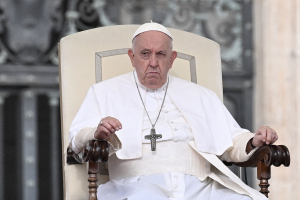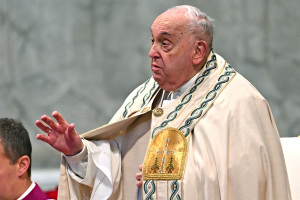Joe Paterno and the Sandusky Statue
Bobby Bowden must have winced when he said recently that the statue of Joe Paterno at Penn State's Beaver Stadium should be removed.
Bowden, himself a famed college football coach, was a close friend of Joe Paterno and his family for more than four decades. For Bowden to call for the removal of the statue shows the profound seriousness of the accusations against Coach Paterno with regard to the Jerry Sandusky affair.
Though Penn State may be able to take down the Paterno icon, it may never be able to rid itself of the Sandusky statue. It is the largest sculpture on the Penn State Campus. Some may protest that there is no Sandusky statue at Penn State. But there must be, because its shadow casts darkness over the Paterno statue, and blocks the light that normally glittered off the bronzed rejoicing face of the coach who always seemed so grim and resolute on the sidelines.
Bobby Bowden acknowledged the possibly ineradicable shadow of the Sandusky statue. "Every time they show the (Paterno) statue on TV, people won't remember the good years," said Bowden, quoted in a July 12 Chicago Tribune story. "They're only going to remember the things with Sandusky."
The Sandusky statue captures the bizarre nature of the calamity the assistant coach brought down on Penn State: you can't see the statue, but you can see its shadow.
Harry Potter stuff.
Except it's not fantasy, as a report the university commissioned from former FBI Director Louis Freeh revealed. Start with the cost of the report itself - $6.5 million. Paterno earlier gave about $4 million to the university, all that wiped out and leaving a $2.5 million deficit when you consider the costs of Freeh's labors.
After laying out the extent of cover-ups and foot-shuffling, Freeh concluded that, while Paterno had "brought huge value" to Penn State, he "made perhaps the worst mistake of his life" in consorting with others to conceal some of Sandusky's sexual behaviors with boys, going all the back to 1998.
The shadow of the Sandusky statue looms large. The statue must be there.
The Sandusky monument is a memorial, not merely to sexual escapades, but to human exploitation. It commemorates the man who is now the poster boy for exploiting children to satisfy his sexual appetites. Sandusky's icon casts a shadow, not only over Paterno's statue, but across the face of contemporary culture.
Ages ago, King Nebuchadnezzar of Babylon raised a mighty statue, and commanded all in his realm to worship before it. There are many in today's world who might flock to worship at the Sandusky statue: Fashion designers and retailers who exploit childhood innocence by dressing pre-teens in sexually provocative clothing, movie and video game producers who exploit the passion for violence to reach adolescent audiences, mothers who exploit their toddler daughters by posing them in kiddie beauty contests, big money enterprises that exploit immigrant and blue-collar labor, politicians who exploit voters with lies to get elected, government that exploits hard-wrought family earnings through unconscionable taxation, priests who hide their sinister intentions behind holy cloth, unions that exploit laborers with dues that benefit the bosses more than the members, sex traffickers who exploit those they trap and enslave, health and wealth religious manipulators who exploit the poor and others with promises of riches and miracles in exchange for donations, academics who exploit their tenured positions to advance nonsense, governments that exploit future generations through piling up debt, the whole porn industry that exploits and enhances sexual addiction, drug pushers who exploit and deepen their hook in addicts.
The list goes on. And on. It no doubt includes me as an exploiter of others at times, and probably you too. Though our exploitations may not have been of the scale and type of Sandusky's, we've all likely been lured sometimes to the cold shadow.
When Nebuchadnezzar hoisted his statue and demanded universal worship, there was one hold-out. Daniel risked his life and reputation in refusing to worship at the foot of the statue.
The tragedy that befell Joe Paterno, Penn State officialdom and the University's reputation is sorrowful enough. But the long shadow of the Sandusky statue and its constant reminder of the awful practice and price of human exploitation will linger over the cultural landscape a long, long time.
"I still love Joe, and I still love his family," said Coach Bowden, as quoted in the Tribune story. "But Joe made a mistake, like all of us do…"
Maybe the Sandusky tragedy will do some good if it reminds us all to stand firm in the faith and courage revealed in Daniel, and not bow before that monstrous statue.





























